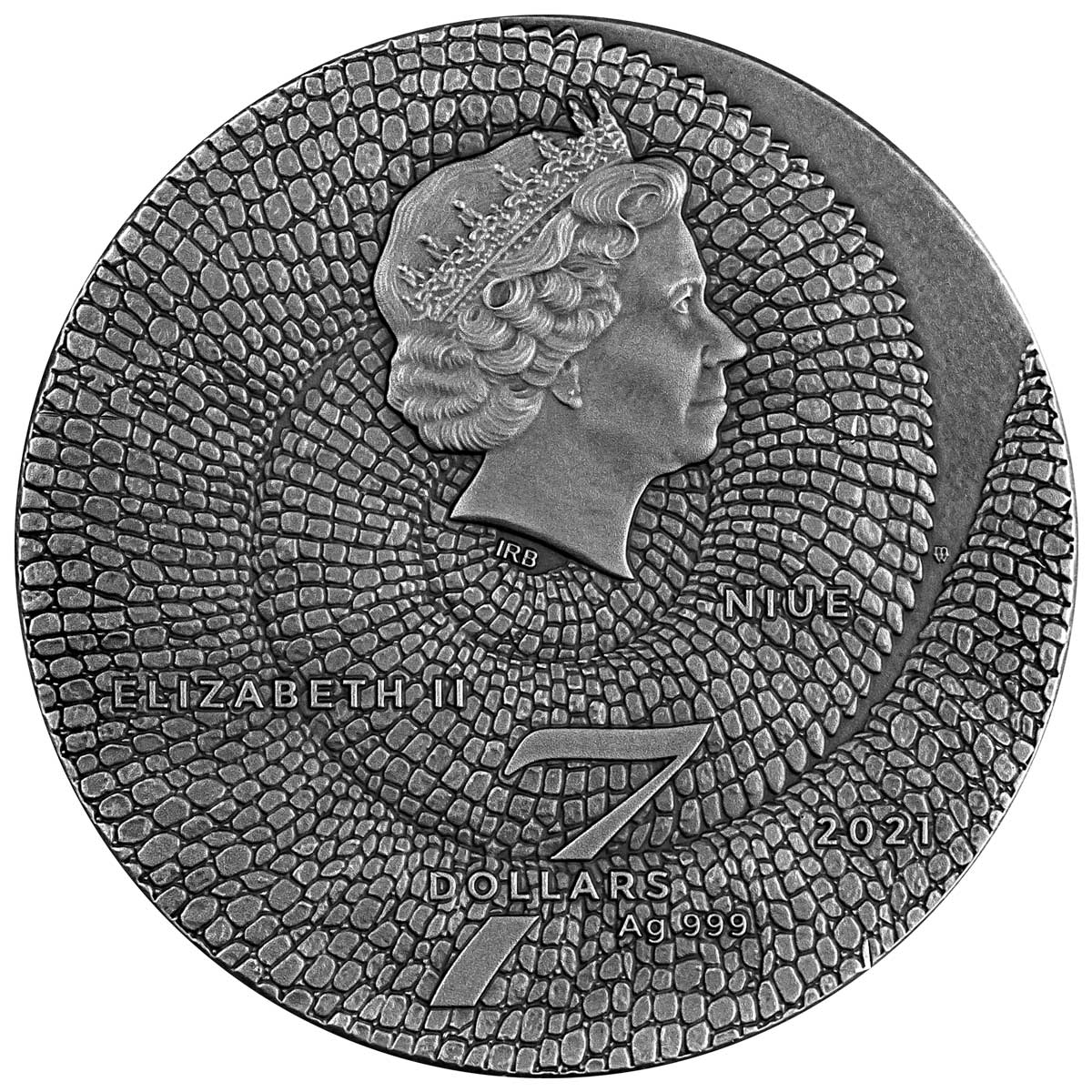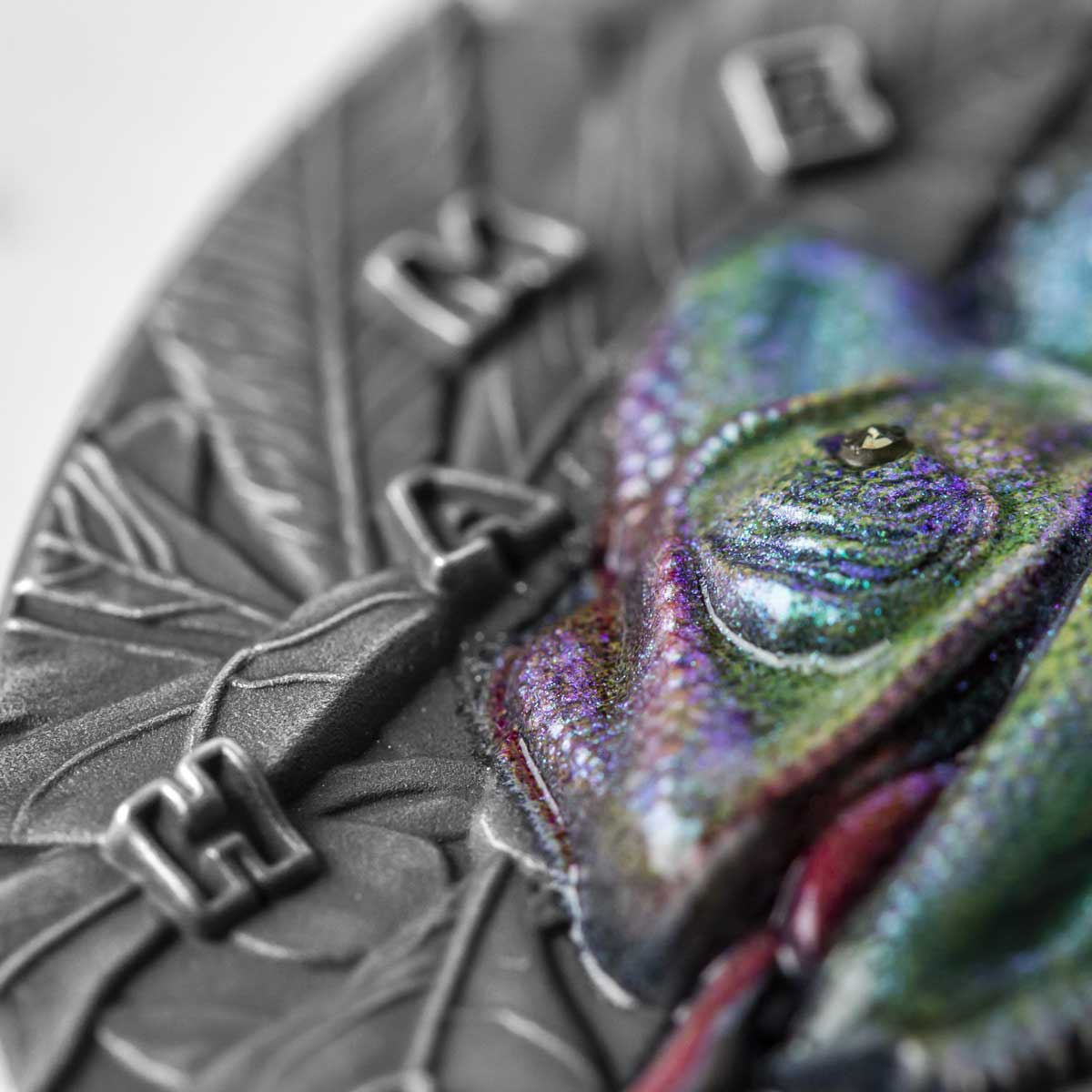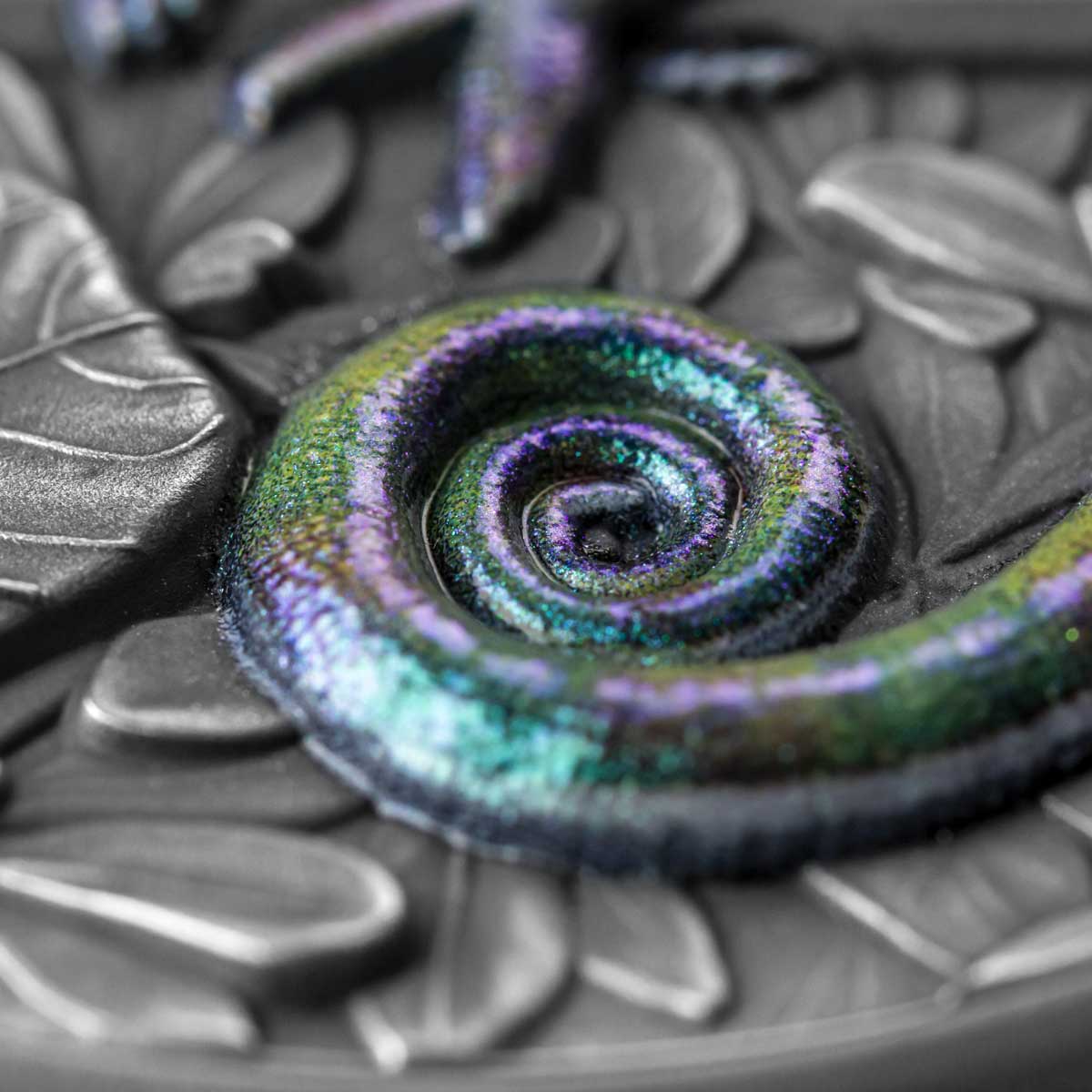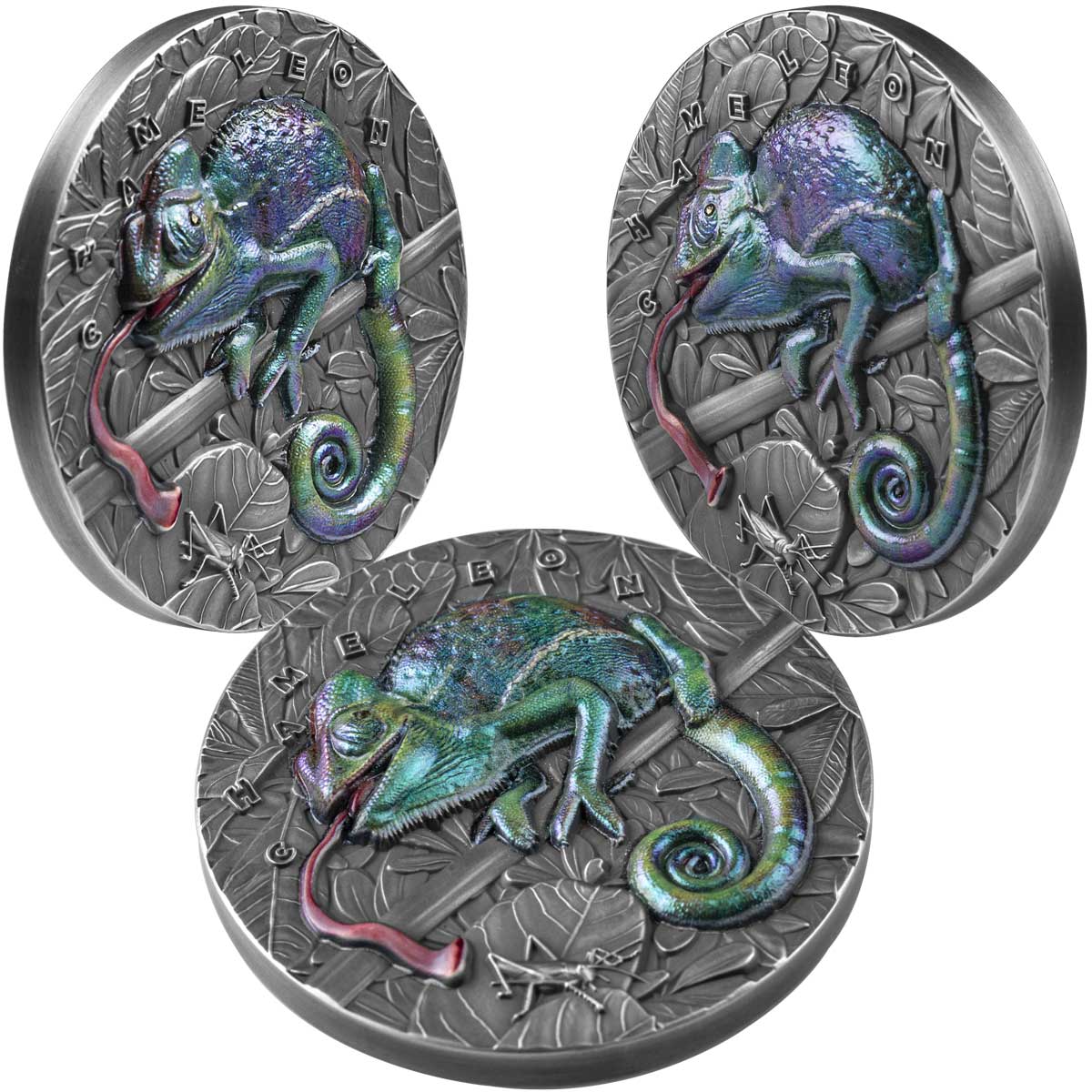A holographic enamel brings the Chameleon to life for the first ‘Amazing Animals’ high-relief silver coin
While specialising more in drawing from the ancient world for inspiration, Numiartis have issued some excellent coins in other genres as well, with the Notre Dame, and ‘So Art’ puzzle coins standing out. Their latest is all new, and the first in the three-ounce silver, ‘Amazing Animals’ series. We love a nature coin here, and they’ve been appearing in fewer numbers over the last few years, especially outside the bullion market, so it’s good to see the expertise garnered elsewhere applied to the animal world.
The series is off to a fine start on the evidence of these images. The basic design is splendid, instantly recognisable as a chameleon, complete with its epic tongue and prehensile tail. Rather than have a clean background field, there’s a pretty, layered mass of foliage. One large leaf in the foreground has a grasshopper resting upon it. You can guess where the chameleon’s tongue is headed…
While colour can be a divisive addition to many coins, we don’t think anyone will complain here. The holographic enamel application allows the depicted chameleon to successfully reproduce the changing hues that typify the animal in reality, it gave its name to a whole form of camouflage – chameleonic. You can see it working in the video, and because of the way it’s applied, each one will be subtly different. The entire coin has a humorous tone, right down to the font used and its placement.
The obverse has a neat, spiral texture that apes the almost as famous curled tail of this unique creature. The effigy of Queen Elizabeth II is there, but the inscriptions are relatively unobtrusive, including the unusual $7 NZD denomination. Also unusual is the mintage – 421. A terrific first entrant in this new series, our favourite Numiartis issue for ages, and one we can imagine maintaining this level, given the subject. After all, there’s little more visually spectacular than the animal world. We haven’t seen packaging yet, but it will come boxed with a C.O.A., and it should ship from late February. Available to order now.
THE CHAMELEON
Chameleons are a distinctive and highly specialized clade of Old World lizards, with 202 species described as of June 2015. These species come in a range of colours, and many species have the ability to change colour.
Chameleons are distinguished by their zygodactylous feet, their swaying gait, and crests or horns on their brow and snout. Most species, the larger ones in particular, also have a prehensile tail. Chameleons’ eyes are independently mobile, but in aiming at a prey item, they focus forward in coordination, affording the animal stereoscopic vision.
Chameleons are adapted for climbing and visual hunting. They live in warm habitats that range from rainforest to desert conditions, with various species occurring in Africa, Madagascar, Southern Europe, and across southern Asia as far as Sri Lanka. They have been introduced to Hawaii, California, and Florida.[
Different chameleon species are able to vary their colouration and pattern through combinations of pink, blue, red, orange, green, black, brown, light blue, yellow, turquoise, and purple. Chameleon skin has a superficial layer which contains pigments, and under the layer are cells with very small (nanoscale) guanine crystals. Chameleons change colour by “actively tuning the photonic response of a lattice of small guanine nanocrystals in the s-iridophores”.
Colour change in chameleons has functions in camouflage, but most commonly in social signalling and in reactions to temperature and other conditions. Colour change signals a chameleon’s physiological condition and intentions to other chameleons. Because chameleons are ectothermic, another reason why they change colour is to regulate their body temperatures, either to a darker colour to absorb light and heat to raise their temperature, or to a lighter colour to reflect light and heat, thereby either stabilising or lowering their body temperature. Chameleons tend to show brighter colours when displaying aggression to other chameleons, and darker colours when they submit or “give up”. Some species, particularly those of Madagascar and some African genera in rainforest habitats, have blue fluorescence in their skull tubercles, deriving from bones and possibly serving a signalling role. (from Wikipedia)
| SPECIFICATION | |
| DENOMINATION | $7 NZD (Niue) |
| COMPOSITION | 0.999 silver |
| WEIGHT | 93.3 grams |
| DIMENSIONS | 50.0 mm |
| FINISH | Antique |
| MODIFICATIONS | Black crystal, holographic enamel, high-relief |
| MINTAGE | 421 |
| BOX / C.O.A. | Yes / Yes |








Leave A Comment